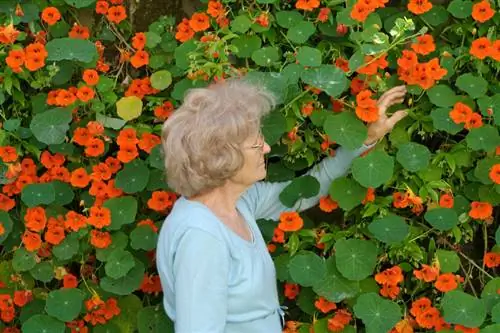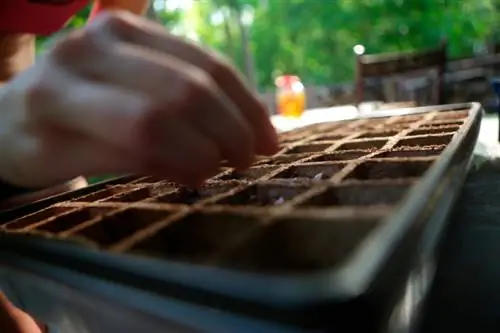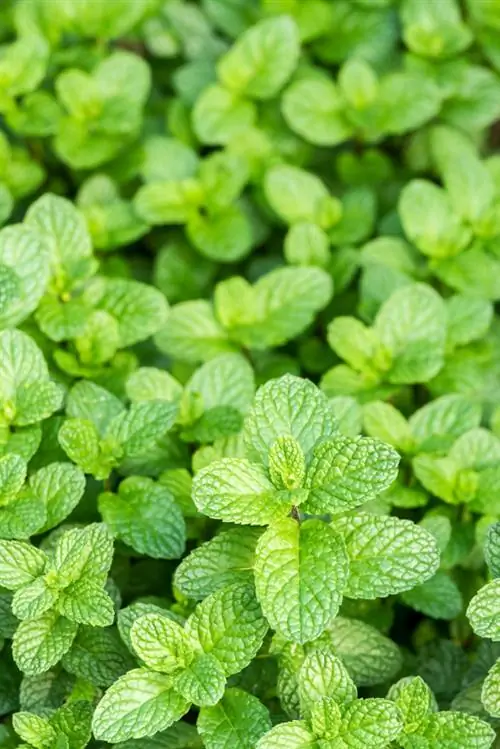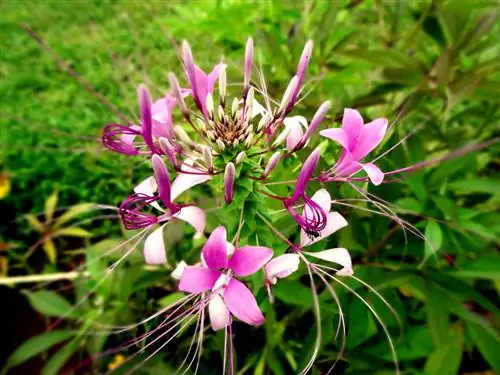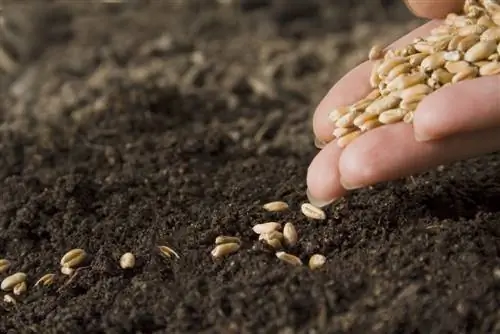- Author admin [email protected].
- Public 2023-12-16 16:46.
- Last modified 2025-01-23 11:20.
Nasturtium is not only very decorative, easy to care for and tasty, it is also a popular medicine and home remedy for diseases of the upper respiratory tract and urinary tract infections. You will hardly be able to find a nicer remedy for cystitis.
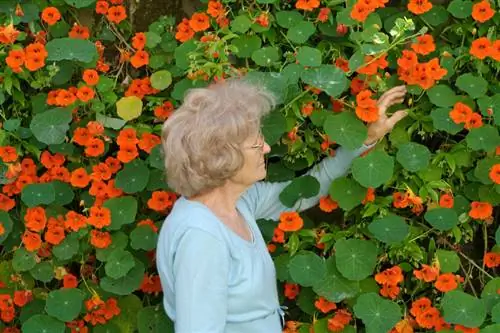
When and how do you sow nasturtiums?
Nasturtiums are ideally sown in spring by planting the seeds directly at their location in well-drained, nutrient-rich soil at a depth of 2-3 cm. Germination takes about 7-14 days at an optimal temperature of 15-20°C.
The right watering
In order for the nasturtium to grow and climb lushly, it needs plenty of water. Nevertheless, waterlogging should be avoided, as it doesn't like it at all. Giving a lot of fertilizer may be well-intentioned, but it only causes the nasturtium to produce numerous leaves and hardly bloom. A little compost in the spring is completely sufficient.
Nasturtiums in winter
Nasturtiums are not hardy. It is often only grown as an annual. If the first frost causes them to freeze, then you just have to sow them again next spring. However, you can also let your nasturtium overwinter in a frost-free, bright location. However, you need a lot of space for this. It is particularly worthwhile for special varieties or potted plants.
If you would like to have the same variety of nasturtium next year, but cannot offer it a suitable winter place, then collect seeds from this plant and sow them in spring or plant cuttings. Cuttings are effectively clones, but are not identical to the mother plant.
Nasturtium diseases
The biggest enemy of the nasturtium is the aphid, and it suffers greatly from this. The cabbage white butterfly caterpillar is also very hard on her. You can also fight both biologically, so that you can still eat the nasturtium later.
The nasturtium harvest
The nasturtium can be used in many different ways. You can enjoy the dug up tuber cooked. You can harvest the young leaves and add them to your salad as a flavorful addition or use them as a topping for bread. The decorative flowers are also edible and are ideal for making flower butter, as an edible decoration for a buffet or for salads.
The nasturtium buds are often used as a substitute for capers. To do this, boil the washed buds in a broth made from vinegar, water and s alt and fill this mixture while it is still hot into a clean screw-top jar. Close this tightly immediately, then the “false” capers will last for a few months.
You can also pickle the nasturtium flowers in vinegar to preserve them. However, these are not cooked, but rather pickled raw. Make sure the flowers are completely covered with vinegar to prevent them from getting moldy. Use a mild apple cider vinegar, it harmonizes well with the taste of the delicately spicy flowers.
The most important things in brief:
- water abundantly
- Avoid waterlogging
- large space requirement
- Trail support
- not hardy
- Leaves, tubers, buds and flowers edible
Tips & Tricks
If you use parts of your nasturtium in the kitchen, then avoid using chemical pesticides.

